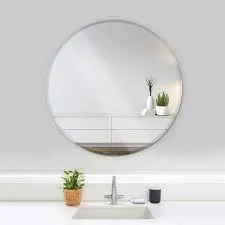

The Importance of Green Tempered Glass in Modern Architecture
In recent years, sustainable building materials have gained significant attention in the architecture and construction industries. One such material that has become popular is green tempered glass. This innovative glass not only offers aesthetic appeal but also provides numerous functional benefits, making it an ideal choice for modern architectural designs.
What is Green Tempered Glass?
Green tempered glass is a type of safety glass that has been treated through a process of extreme heating and rapid cooling to increase its strength and durability. The term green refers to the glass's tint, which typically has a slight green hue due to the iron content within the glass. This subtle coloration not only enhances the visual appeal of buildings but also has important implications for energy efficiency and sustainability.
Energy Efficiency and Sustainability
One of the primary benefits of using green tempered glass is its energy efficiency. This type of glass is effective at reducing heat transfer, which contributes to lower energy consumption in buildings. During hot summer months, green tempered glass helps keep indoor environments cooler by reflecting a significant amount of solar radiation, while in winter, it retains heat, contributing to a more stable indoor temperature. This property is particularly advantageous in regions with extreme temperatures, as it reduces the reliance on heating and cooling systems, ultimately leading to significant energy savings.
Furthermore, green tempered glass is 100% recyclable. Once it reaches the end of its life cycle, it can be processed and transformed into new glass products. This aligns with the principles of sustainable development and the growing demand for eco-friendly construction materials. By choosing green tempered glass, architects and builders contribute to a circular economy, minimizing waste and environmental impact.
Aesthetic Appeal and Versatility

Beyond its functional advantages, green tempered glass also adds an element of elegance and sophistication to architectural designs. Its unique tint can complement a variety of styles, from contemporary skyscrapers to residential homes. The glass can be used in windows, facades, balustrades, and even decorative features, allowing architects to integrate it seamlessly into their designs.
Additionally, the versatility of green tempered glass means it can be combined with various framing materials, such as aluminum or wood, to create a striking contrast or a cohesive look. The natural green hue provides a refreshing connection to nature, enhancing the surrounding landscape and fostering a sense of harmony between buildings and their environments.
Safety and Durability
Green tempered glass is known for its strength and safety features. The tempering process makes the glass up to five times stronger than standard glass, making it highly resistant to impact and thermal stress. In the event of breakage, tempered glass shatters into small, blunt pieces that pose a reduced risk of injury, making it a safer choice for high-traffic areas or buildings with large glass installations.
This durability also means that green tempered glass can withstand the rigors of weather conditions, from heavy rain to intense sunshine. Its resistance to corrosion and fading ensures that the glass maintains its clarity and aesthetic appeal over time, requiring minimal maintenance.
Conclusion
In conclusion, green tempered glass is a remarkable material that embodies the principles of modern architecture sustainability, energy efficiency, and aesthetic appeal. Its unique properties make it an ideal choice for a wide range of applications, from commercial buildings to residential homes. As the demand for eco-friendly materials continues to rise, green tempered glass stands out as a versatile, durable, and beautiful solution that contributes not only to individual projects but also to broader environmental goals. Embracing this innovative material can help architects and builders create structures that are not only visually stunning but also sustainable and resilient for future generations.